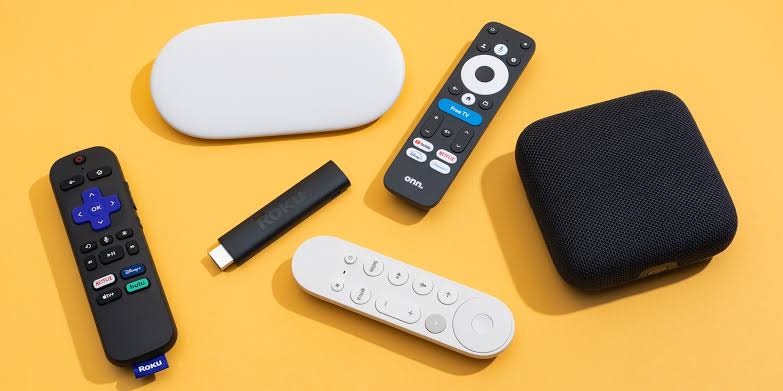With the rise of on-demand entertainment, streaming devices have become essential for modern households. They allow users to access movies, shows, music, and even live television conveniently over the internet. Choosing the right streaming device, however, can be overwhelming because of the numerous options available today. Factors such as compatibility, performance, budget, and extra features all play a role in making the right decision. Understanding these considerations ensures you pick a device that meets your entertainment needs without wasting money on unnecessary features.
Consider Device Compatibility
The first step in choosing a streaming device is checking whether it is compatible with your existing setup. Not every device works smoothly with all televisions or ecosystems. For example, some streaming devices are optimized for smart TVs, while others work better with traditional HDTVs that need HDMI connections.
Important points to check include:
- Whether your television has the required HDMI input.
- If the device supports the resolution of your TV (HD, Full HD, 4K, or 8K).
- Compatibility with your home internet connection speed.
Ensuring compatibility prevents the frustration of buying a device that does not integrate well with your home system.
Evaluate the Streaming Quality
Streaming quality is one of the most critical features when choosing a device. Poor video and audio performance can ruin the viewing experience, especially if you enjoy high-definition movies or live sports. Devices vary in the resolutions they support, so selecting one that matches your expectations is essential.
When comparing devices, look for:
- 4K and HDR support for a more vivid picture.
- Dolby Atmos or Dolby Vision for enhanced sound and visuals.
- Smooth playback without frequent buffering.
If you plan to use the device for gaming or high-speed sports, ensure it has fast processing power to handle heavy streaming without lag.
Check for App Availability
Different streaming devices support different apps and platforms. Some may prioritize specific services, while others provide broader access to multiple entertainment options. Before making a purchase, consider the apps you use the most.
Common services to check include:
- Netflix, Hulu, Disney+, Amazon Prime Video, and Apple TV+.
- YouTube and music apps such as Spotify.
- Sports and live TV apps depending on your region.
Choosing a device with a wide app selection ensures flexibility and prevents missing out on your favorite content.
Look at the User Interface
The ease of navigation is another factor that should not be overlooked. A good streaming device should have a simple, responsive, and user-friendly interface. Complicated menus or slow responses can make the viewing experience frustrating.
Key features of a good interface include:
- Quick search options.
- Personalized recommendations based on viewing history.
- Smooth switching between different apps.
Devices that offer voice control or smart search features also make navigation faster and more convenient.
Pay Attention to Remote Control and Voice Features
The remote control is the primary way users interact with a streaming device. Some remotes are minimalistic, while others include advanced features such as built-in microphones for voice control.
When evaluating remotes, consider:
- Comfort and button layout for ease of use.
- Dedicated buttons for popular streaming apps.
- Voice assistant integration for hands-free control.
Voice-enabled remotes allow you to search for shows, adjust settings, and even control smart home devices without pressing multiple buttons.
Assess Smart Home Integration
For those who already use smart home devices, integration should be a priority. Some streaming devices work seamlessly with ecosystems like Google Home, Amazon Alexa, or Apple HomeKit.
Benefits of smart home integration include:
- Controlling lights, thermostats, and other devices through the streaming system.
- Synchronizing media across multiple devices.
- Using voice assistants to manage both entertainment and household features.
Choosing a device that aligns with your smart home system creates a more connected and convenient environment.
Compare Prices and Subscription Costs
While some streaming devices are budget-friendly, others come with premium features at a higher cost. It is important to compare not only the device’s price but also the subscription fees for the apps you plan to use.
Consider the following:
- Initial cost of the device (budget stick vs. premium box).
- Ongoing subscription costs for services.
- Free channels or apps included with the device.
Balancing cost with functionality ensures you get the best value without overspending on features you do not need.
Check Portability and Size
Some users may want a streaming device they can travel with or move between different rooms in the house. Portable streaming sticks are compact and easy to carry, while streaming boxes often provide more features but are bulkier.
Think about your usage patterns:
- If you travel often, a stick-shaped device may be ideal.
- For a dedicated home theater setup, a larger box may be worth the investment.
Portability also comes in handy for students or those living in shared housing where devices need to be moved frequently.
Consider Future-Proofing
Technology evolves quickly, and choosing a device that can keep up with new updates ensures longevity. Devices that support the latest resolutions, fast Wi-Fi standards, and regular software updates are more future-proof.
Look for:
- Wi-Fi 6 support for faster and more stable connections.
- Regular updates from the manufacturer.
- Hardware capable of handling higher resolutions like 8K.
This ensures your device remains relevant for several years without frequent replacements.
Conclusion
Choosing the right streaming device involves more than just picking the most popular option on the market. Compatibility with your current setup, streaming quality, app availability, and ease of use are all crucial considerations. Features like smart home integration, portability, and future-proof technology add long-term value, while balancing cost ensures affordability. By carefully evaluating these factors, you can select a device that delivers the best entertainment experience tailored to your needs and lifestyle.




Interesting